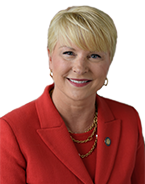The Fight Against Heroin And Opioid Abuse
A legislative column from Assemblywoman Mary Beth Walsh (R,C,I,Ref-Ballston
Whether it is a friend, classmate, family member, co-worker or even just a casual acquaintance, it seems we all know someone who has been recently affected by the widespread issue of heroin and opioid abuse. While this problem can be difficult for many to talk about, we must acknowledge the reality of the situation. Heroin and opioid addiction will continue to endanger our community unless we unite in a commitment to both raise awareness and take action.
Recent statistics concerning heroin and opioid addiction across the country are frightening. Overdose death rates are steadily climbing, and the American Society of Addiction Medicine reports that prescription painkillers and heroin account for well over half of these tragic incidents. In addition, the same study found that, of the 20.5 million Americans over the age of 12 that had a substance abuse disorder in 2015, over 10 percent involved prescription pain medication and heroin.
It’s no secret that there is a correlation between these two dangerous substances. A 2014 survey of people in treatment for opioid addiction also found that a shocking 94 percent of respondents chose to use heroin because prescription opioids were, “more expensive and harder to obtain.”
So now we must ask ourselves what can be done to fight this issue before the problem becomes even worse. Fortunately, there is already a dedicated core of local addiction specialists and elected officials working tirelessly to protect our families from heroin and opioid abuse.
This important issue is a top priority for me and my colleagues in the state Legislature. Since 2010, an excess of $200 million has been allocated to combat heroin and opioid abuse in New York State. In 2016, prior to my tenure in the Assembly, a package of laws was passed in an attempt to advance statewide addiction services, and prevent those who need assistance from falling through the cracks. These measures included the reporting and collection of data pertaining to opioid abuse and overdoses, expanded insurance coverage, increased funding to educate pharmacists, medical professionals and the general public to raise awareness and increased treatment options and follow-up care for those struggling with addiction.
Last month, I hosted a community forum at the Burnt Hills-Ballston Lake High School, bringing together many knowledgeable local stakeholders who are working to fight heroin and opioid addiction. This expert panel included local law enforcement representatives, treatment and addiction specialists, emergency responders and members of our community who have been personally affected by this issue.
The engaged audience walked away with perspectives from across the board. From the Saratoga County Sheriff and first responders we learned about the spike in abuse, overdoses and deaths and how common the practice of overdose reversal with Narcan is. We heard how these substances are becoming increasingly more dangerous due to the addition of deadly doses of fentanyl. Medical specialists discussed the importance of how we deal with emotional or physical pain, and what happens to the body when addicted to heroin and opioids. Marytheresa Galante, the mother of James Galante who tragically passed away December of last year from an overdose, gave a heartfelt presentation highlighting warning signs and what parents should be vigilant of when interacting with their children. And while the discussion was primarily heavy and somber, we also heard stories of hope - and how lives can be changed and challenges can be overcome with support and inspiration.
Members of our community have shown interest in opening up the dialogue, and that momentum must continue in order to take the heroin and opioid crisis head on. I urge anyone who has ideas or experiences to share or is interested in learning more about the resources and drug take back events happening in our community to contact me at WalshM@nyassembly.gov.
